Music is the universal language
“Glory to God in the highest heaven, and on earth peace to those on whom his favor rests.” - Luke 2:14
General Interest
Warm Audio Unleashes Dual Overdrive Powerhouses: Throne of Tone & Tube Squealer
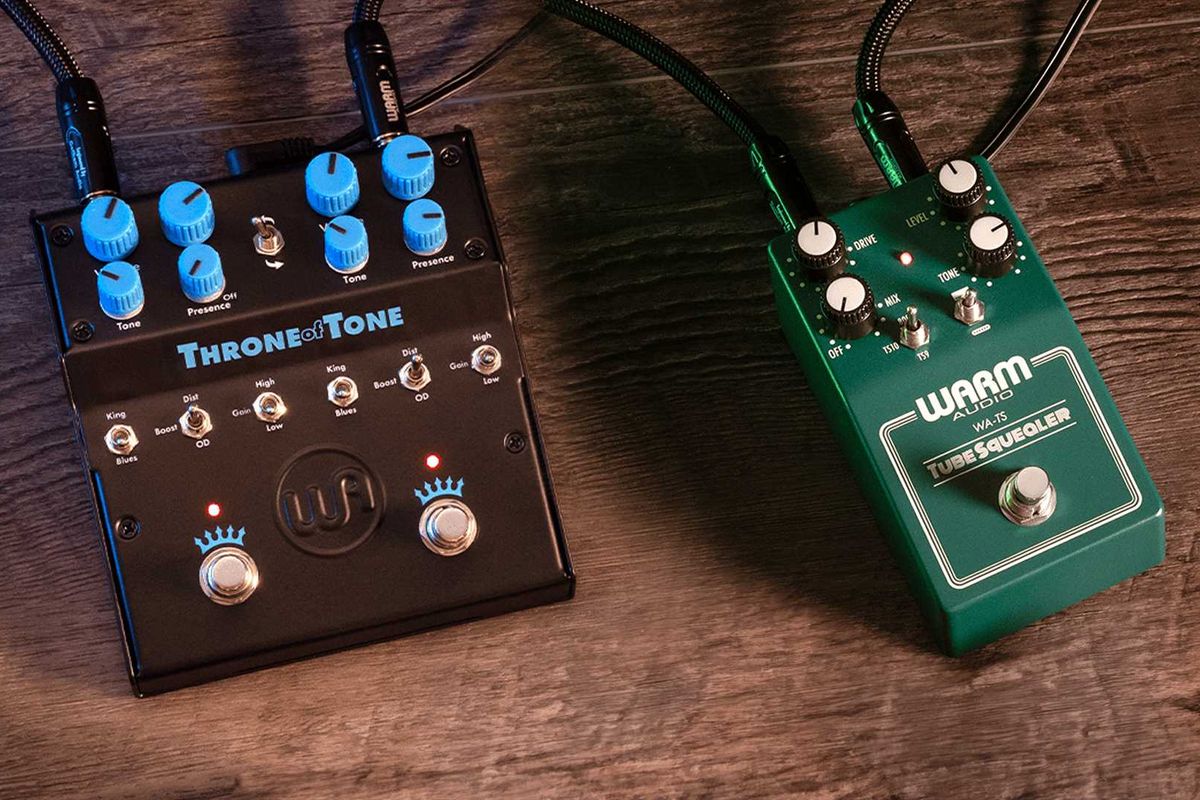
Warm Audio pays tribute to two of the most legendary overdrive sound profiles of all time, delivering multiple sought-after vintage-accurate tones from each pedal and robust functionality to meet the demands of modern players and pedalboards.
Warm Audio, the leading manufacturer of faithful recreations of legendary recording gear and guitar pedals, today announces the release of two new effects pedals. Introducing the Tube Squealer, a faithful recreation of not one, not two, but three of the most celebrated mid-gain overdrives known for driving tube amps into blissful tonal saturation. Select between authentic 808, TS9, and TS10 circuits, each capturing the legendary Japanese designs that shaped decades of guitar tone. Additionally, Warm Audio is releasing the Throne of Tone, a dual-sided overdrive that combines two of the greatest British amp-inspired blues circuits of all time in one pedal. Designed for ultimate flexibility, Throne of Tone offers two classic voicings, low/high gain settings, and three drive modes, including boost, overdrive, and distortion, per side. The Tube Squealer (MSRP $149 | 159 € inc. VAT | 139 £ inc. VAT) is available exclusively at Guitar Center in the US and authorized retailers worldwide. Throne of Tone (MSRP $229 | € 249 inc.VAT | 219 £ inc. VAT) is available at all authorized Warm Audio retailers worldwide.
“These are two of the most popular styles of overdrive in guitar history, and we’re excited to add them to the Warm lineup. We maintained the Warm formula of vintage-accurate tone and premium components, but we went a step further to combine some of the greatest iterations of these tones along with feature-rich functionality into each,” said Bryce Young, founder & president of Warm Audio. “For Tube Squealer, we couldn’t limit ourselves to just one of the classic pedal tones so we built the most legendary three into one pedal. Then we added critical controls to make it a must-have on any pedalboard.”
Young continues, “For the Throne of Tone, we decided to honor the 3-knob vintage pedal that inspired a whole wave of boutique recreations, and added a second side plus alternative voicing to deliver the most unobtainable boutique blues OD. With these unique voicing options, plus added features for presence, gain structure, and gain amount, you can create dozens of combinations previously unavailable in addition to getting the authentic sound of the originals - all in one stomp box!”
Tube Squealer
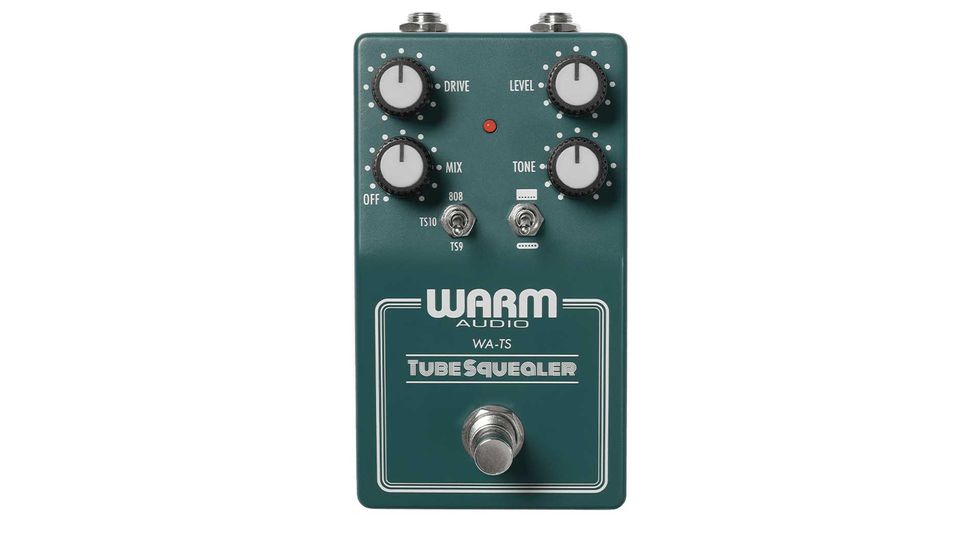
The Tube Squealer is a faithful recreation of three legendary, tube-driving overdrives built with premium, 100% analog circuitry and loaded with modern, rig-ready features. Its three selectable voicings—808, TS9, and TS10—switch the circuitry to authentically recreate the revered Japanese designs that shaped guitar tones from the late ’70s through the late ’80s. The 808 delivers the earliest iteration of the classic overdrive, the TS9 captures the most produced and widely recognized version, and the TS10 revives an underrated circuit that continues to gain respect among tone chasers. These circuits, faithfully recreated in the Tube Squealer, have powered some of the most iconic sounds in history, heard on countless records and stages worldwide.
Taking the mid-gain, tube-amp-driving concept even further, the Tube Squealer adds modern flexibility to suit any setup. A mix knob lets players blend clean and driven signals for precise tone shaping, while a pickup-voicing selector optimizes response for single-coils or humbuckers. An external voltage booster instantly increases headroom for more dynamic tones before saturation kicks in. Inside, the Tube Squealer features JRC4558 op-amps, discrete transistors and diodes, and premium JFETs; components chosen to preserve the character and response of the originals. With asymmetrical clipping true to the first-of-its-kind topology, the Tube Squealer delivers three iconic overdrives in one pedal, making it a versatile, high-value overdrive that never needs to leave your board.
Throne of Tone
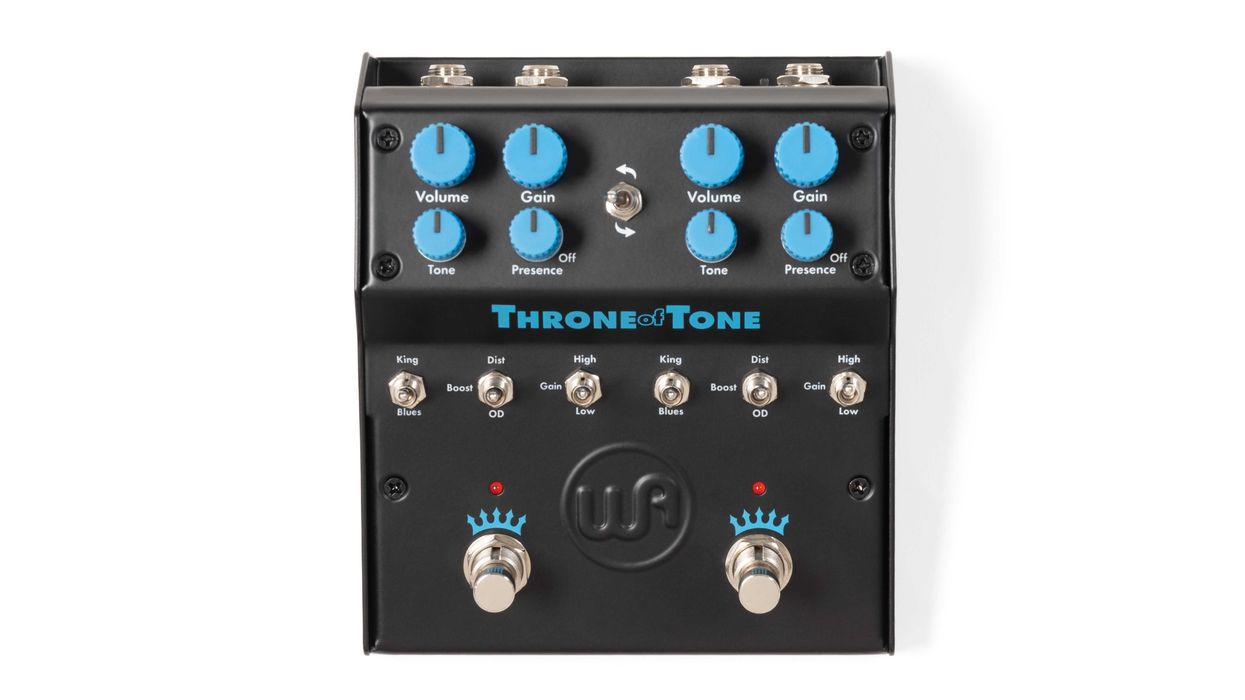
The Throne of Tone pays tribute to the greatest British Blues sonic profiles in all of guitar history, delivering the signature mid-gain amp “breaking” tone found on the most celebrated vintage amps and boutique pedal recreations. This dual-sided pedal offers two classic voicings, each with low and high gain levels and three drive modes: boost, overdrive, and distortion, making it easy to move from subtle breakup to saturated lead tones without ever diving through menus. Like the original amps and the pedals they inspired, the Throne of Tone excels at British-style breakup, with symmetrical clipping that captures the feel of classic tube amps pushed beyond their clean limits.
For even greater tone-shaping, each side of the Throne of Tone features an independent presence control (500Hz–2.3kHz) alongside the standard tone knob. A rear-mounted external voltage doubler (9V–18V) adds extra headroom on demand, while its 100% true bypass switching, including the send/return jacks, enables the ability to add a pedal in between the circuits. Every feature is externally adjustable for quick changes on the fly, with no need to open the enclosure. Inside, 24 diodes and premium JRC4580 and TL072 op-amps power two fully analog circuits, delivering uncompromising tone in a versatile, performance-ready package.
Like all Warm Audio gear, every single Tube Squealer and Throne of Tone are meticulously hand-tested and inspected by trained technicians with a passion for making music in Austin, TX.
Availability & Pricing:
- Tube Squealer: MSRP $149 | 159 € inc. VAT | 139 £ inc. VAT
- US: Guitar Center Exclusie
- Worldwide: All authorized Warm Audio retailers
- Throne of Tone: MSRP $229 | € 249 inc.VAT | 219 £ inc. VAT
- US & Worldwide: All authorized Warm Audio retailers
For more information, visit www.warmaudio.com/Tube-squealer & www.warmaudio.com/throne-of-tone.
“When I’m Sixty-Four”—Learn a Fun, Hybrid-Picked Arrangement of This Time-Honored Beatles Tune
“I’m not that fast on the guitar, but I don’t want to be”: David Gilmour explains why speedy solos never interested him

Can’t shred? No problem. Plenty of top-tier guitarists prefer to take things slow, and Pink Floyd’s David Gilmour is one of them.
In a new chat with NPR, Gilmour explains why speedy chops have never interested him. “I’m not that fast on the guitar, but I don’t want to be,” he says. “Even if I could, [my style] is what I love. It’s what I’ve spent my whole life doing.”
- READ MORE: Save big on Prime Day guitar deals at Positive Grid, Sweetwater and Thomann – here are our top picks
While people often inquire as to why he prefers a slower style, the Pink Floyd legend insists its something he “doesn’t really think about”, personally. “I don’t pre-think things very often,” he explains. “I’m not trying to work out what would be new and exciting or different. I’m just hunting for an emotion, in the moment.”
“I started out playing music in bands when I was 16 or 17, and I’ve never stopped…” he continues. “[Musically], I just follow where I’m led.”
Last November, Gilmour also explained his slower, more “tuneful” approach in an interview with YouTuber Rick Beato. While slower solos come easily, Gilmour admits that he struggles to feel inspired when the pace kicks up a notch.
“I wasn’t gifted with enormous speed on the guitar,” he told Beato at the time. “There were years when I was younger were I thought I could get that if I practiced enough. But it just wasn’t ever really going to happen.”
Gilmour isn’t the only artist to reflect on the struggles of attaining high-speeds on the fretboard. In fact, in his later years, Eddie Van Halen even told Guitar Player journalist Jas Obrecht that he’d grown tired of whiplash-fast playing. “Sure, that’s fine and dandy when you’re young… playing as fast as you can doesn’t really hold much water for me now,” he said in 1991.
The Van Halen icon even admitted that quick playing can sometimes even detract from a song, as its more of an “ego” boost to showcase your skills than to make a track better. “To me, a solo is to highlight song – it’s not to show off,” he concluded.
Later this month, Gilmour is set to release a live album, The Luck and Strange Concerts. The 17 October release will be full of live versions of tracks from his 2024 solo record, Luck and Strange.
Gilmour is also in the midst of releasing teaser tracks for the 50 year anniversary of Pink Floyd’s 1975 album, Wish You Were Here. A deluxe boxset is due to drop this December, which will include plenty of demos and live recordings from the era.
The post “I’m not that fast on the guitar, but I don’t want to be”: David Gilmour explains why speedy solos never interested him appeared first on Guitar.com | All Things Guitar.
Harness the raw tone of ‘50s tweed amps and the mid-’60s cleans with Fender’s new Super 62 combo

After recently giving its Tone Master FR-12 cab a vintage Tweed makeover, Fender is continuing to expand its amp offerings with the new Super 62, the latest addition to its American Vintage Amplifier series.
Harnessing both the raw tone of ‘50s-era tweed amps and the classic clean tone of the mid-’60s, the Super 62 offers a “warm and woody clean sound alongside a sweet overdrive when cranked”.
- READ MORE: Save big on Prime Day guitar deals at Positive Grid, Sweetwater and Thomann – here are our top picks
The Super 62 is powered by a pair of 6L6 tubes, driving 40 watts into dual 10” Celestion Custom Design speakers, while a phase-shifting harmonic tremolo offers a “rich dimension to any sound”. The amp also features six 12AX7 preamp tubes, as well as one 5AR4 rectifier tube.
With a single-button footswitch included, the Super 62 has two channels, both with Volume, Treble and Bass controls, while Channel 2 also has Speed and Intensity controls, and there’s a master Presence control, too.
Last week, Fender gave its Tone Master FR-12 full-range, flat-response cab a Tweed reskin, offering lovers of both amp modellers and vintage-aesthetic amplifiers what might be the perfect cab solution.
The Super 62 is priced at $2499.99 / £2,439.
For more information, head to Fender.
 Credit: Fender
Credit: Fender
The post Harness the raw tone of ‘50s tweed amps and the mid-’60s cleans with Fender’s new Super 62 combo appeared first on Guitar.com | All Things Guitar.
Save big on Prime Day guitar deals at Positive Grid, Sweetwater and Thomann – here are our top picks

October 7-8 marks Amazon’s second Prime Day of the year. But while Prime Day deals are generally geared towards consumer electronics and other mainstream-type items, some of the biggest online music retailers are also slashing prices on gear.
So here at Guitar.com towers, we’ve hunted down some of the best deals from the likes of Positive Grid, Sweetwater, Thomann and Reverb, and collated them right here so you can see if there’s anything that takes your fancy…
First up, over at Positive Grid, you can get the brand’s groundbreaking Spark 2 smart amp – which we gave 9/10 in our review – for just $296.65, down from $349. That’s over $50 off a decked out practice amp with AI features, a built-in looper, Bluetooth and loads more.
Or why not grab the smaller 10-watt Spark MINI – with onboard Bluetooth and smart app integration – for just over $200, down from $249? You can check out all the latest Positive Grid deals by clicking the button below:
[deals ids=”6nBL9El8aFSkJtYyxtQlNW”]
Meanwhile, over at Sweetwater, we’ve spotted a massive $600 off this Gibson Les Paul Standard ‘60s in Sparkling Burgundy, taking its price tag down to just $1,999. You can also grab the SE Silver Sky – the affordable version of PRS’s collaboration with John Mayer – for a cool $170 off, meaning you pay just $679. Check out all the latest guitar deals at Sweetwater below:
[deals ids=”3w4XBqog7Diuq1qrbLCJ0r”]
Thomann’s also hosting some excellent deals you can take advantage of, like this B-stock Sterling By Music Man St. Vincent Goldie, discounted by over 30%, meaning you pay just £735 instead of over £1,000. If you’re a St. Vincent fan, this deal might be a no brainer…
Or if you’re more shred-inclined, this B-stock Charvel PM PLUS SRS SC1 HH HT is £839 down from £899 – a cool £60 saving ready to be snapped up. View all of Thomann’s latest hot deals below:
[deals ids=”3O2kkaA5bAtS7hUrLouKOW”]
And finally, we’ve searched the second-hand market over at Reverb, and found the following sweet deals on guitar gear. Check out this 2002 ESP LTD EX-351D Diamond Plate Explorer, with a 20% price drop, taking its usual £800 price tag down to just £645.
Or try this PRS SE Silver Sky in Moon White, now priced at just £599 down from £895 – almost £300 off! View all the best bargains at Reverb by clicking the button below:
[deals ids=”4kley1OT4Hbr7KXcEhGQk”]
The post Save big on Prime Day guitar deals at Positive Grid, Sweetwater and Thomann – here are our top picks appeared first on Guitar.com | All Things Guitar.
Blackstar Polar GO mobile audio interface review: “I was amazed at the sensitivity of the mics”

$129/£79, blackstaramps.com
Whether you’re preserving ideas from a writing session or recording a breakthrough EP like Steve Lacy’s Demo, a smartphone is the most immediate device most of us have for capturing sound.
But despite the improvement in phone mics over the last decade, getting something to truly sound good without some pricey external hardware in the mix has proved stubbornly elusive… at least until now.
- READ MORE: EarthQuaker Devices Easy Listening review – can an amp simulator this simple actually sound good?
The Polar GO from Blackstar is the most compact iteration of its impressive Polar family of audio interfaces. But what’s really exciting about it is the combination of size, features and price it offers. This promises to be an affordable interface that will make your audio sound better… and you won’t even need a mic to do it.
 Image: Press
Image: Press
Blackstar Polar GO – what is it?
Blackstar describes the GO as not an audio interface but a “complete, pocket-sized studio designed for the modern creator” – and while that seems like the sort of marketing hyperbole you’d normally treat with an eye-roll, when you take a closer look, you can see what the British company means.
So, yes, it’s an audio interface, but it’s one that’s absolutely tiny (it comfortably fits in the palm of your hand), complete with a rechargeable built-in battery, a combined ¼-inch/XLR input with 48V phantom power, a USB-C out for plugging into your phone/laptop and a 3.5mm headphone jack for live monitoring.
Most excitingly, however, it also comes with Blackstar’s ProCapture Stereo Mics – a pair of onboard microphones to offer quality stereo recordings to elevate what you’re doing without the need for any kind of bulky traditional mic. This is plug-in-and-play recording – but with less plugging in.
That’s further enhanced by the GO’s onboard DSP engine that applies the onboard reverb, compression, EQ and noise control (editable via the Polar GO app) to make what you’re capturing sound pro-ready before it even hits your stream or recording software. You’re able to save one setting at a time to the hardware to use independently from the app.
Effectively, in goes your vocal or instrument signal; out comes a tailored sound to record in GarageBand, BandLab or whathaveyou, or stream/upload to YouTube, TikTok or Twitch.
In addition to the simple onboard controls (input and output) you also get the Polar GO App, which supports iOS and Android (even my gracefully ageing Pixel) and allows you to tailor your sound by tweaking the EQ, compression, reverb and the like to taste. It also allows you to record video directly while you’re playing, and comes with a bunch of presets designed to enhance various input sources.
 Polar GO App. Image: Press
Polar GO App. Image: Press
Blackstar Polar GO – build quality
The striking thing about the Polar GO as a physical device is how compact and light it seems – even with that in-built battery that promises about four hours of recording time, it still only weighs 136g, or less than five ounces in old money.
Despite that it manages to squeeze all its various essential inputs and outputs into its case without it feeling cramped – the power and data USB-C ports are on one side along with the headphone out, while the combi XLR/jack input and buttons for power and phantom power are on the other, leaving the top clear for the input and output knobs, status LEDS and the mics themselves.
It all serves to keep the cabling and tangling of said cables to an absolute minimum. The light weight means you can easily pull it off a desk/bench/knee if you’re not careful. But it feels rugged enough, and if you’re really worried about such things, the Polar GO’s base is magnetic, so you can attach it to a mic stand or similar with any Magsafe or similar mobile phone mount.
 Polar GO with XLR. Image: Press
Polar GO with XLR. Image: Press
Blackstar Polar GO – in use
While the Polar GO’s knobs, connections and mics are all impressive in themselves, what really matters is how they interact with your smartphone.
For me, an Android user, it proved incredibly simple to feed a signal from the interface to mobile apps like Fender Studio and my phone camera app’s video function, by connecting the interface to the phone via USB-C. With sound achieved with minimal fuss, it was time to open the app and play around with the settings on Blackstar’s Polar GO App.
Here you’ll find a good range of presets for different types of input, including mic’d acoustic guitar or vocals, bass guitar and external vocal mic, plus reverb (‘space’) settings with preset ‘Hall’, ‘Cave’, ‘Room’, ‘Plate’ and ‘Vocal’ parameters.
One slightly disappointing thing is that there are no bespoke electric guitar presets, which struck me as odd given Blackstar’s pedigree with digital guitar sounds. The upshot is that you’ll either want to add effects and the like to your guitar signal before it hits the GO – via an amp modeller or pedalboard, for example – or at the other end with an amp and effects plugin. This is no biggie given the ubiquity of such options nowadays, but it’s a small drawback for electric guitar players.
 Image: Press
Image: Press
You have the option to multi-track (or simultaneously record) via the mic and line inputs, which is a big plus for singer-songwriters. For a full-band live recording, you’d need an interface with more channels, and you’d probably be recording onto a computer, anyway.
The headline item is definitely those ProCapture Stereo Mics, however – they are a huge upgrade on what you’d normally get from a smartphone mic. I was amazed at the sensitivity of the mics when monitoring with headphones. The mics captured all the fine, textural detail of acoustic playing, as well as background noises in the room.
It’s easy to see why Blackstar is pitching the GO as much to, podcasters and ASMR content creators as musicians – they’ll certainly capture all the detailed nuances of a sound. In fact, they pick up so much more than a smartphone mic, you’ll need to be mindful of movement during recording – it’s easy enough for a stray chair creak or rustle of clothing to be picked up.
One other thing to be aware of is that the Polar GO App is smartphone-only, so while you can plug the interface into a Mac or Windows laptop, its full functionality is only available to mobile users.
 Polar GO with headphones. Image: Press
Polar GO with headphones. Image: Press
Should I buy the Blackstar Polar GO?
Obviously, something this portable isn’t going to offer the features and functionality of a full-size audio interface, but what’s impressive is how few compromises you actually have to make with the Polar GO.
The onboard mics are what make this a true game-changer, however; significantly reducing the amount of kit you need to take with you to be able to record excellent-sounding audio on the go. With a keen price and sensible sound-enhancing on-board features aimed at those who just want to sound good without hassle, this is one of the best smartphone audio interfaces out there.
Blackstar Polar GO – alternatives
Building microphones into the actual audio interface is a USP that sets the Polar GO apart, but there are plenty of more traditional mobile recording interfaces out there should you not need them. IK Multimedia’s iRig Pro I/O ($169.99) offers similar combi input flexibility to the GO, and even adds MIDI if you should need such a thing, while the more compact TC Helicon’s GO Guitar Pro ($79/£69) is a solid budget option.
The post Blackstar Polar GO mobile audio interface review: “I was amazed at the sensitivity of the mics” appeared first on Guitar.com | All Things Guitar.
PRS Guitars Announces New SE Models Plus a New Combo Amp Ahead of 2026 Updates
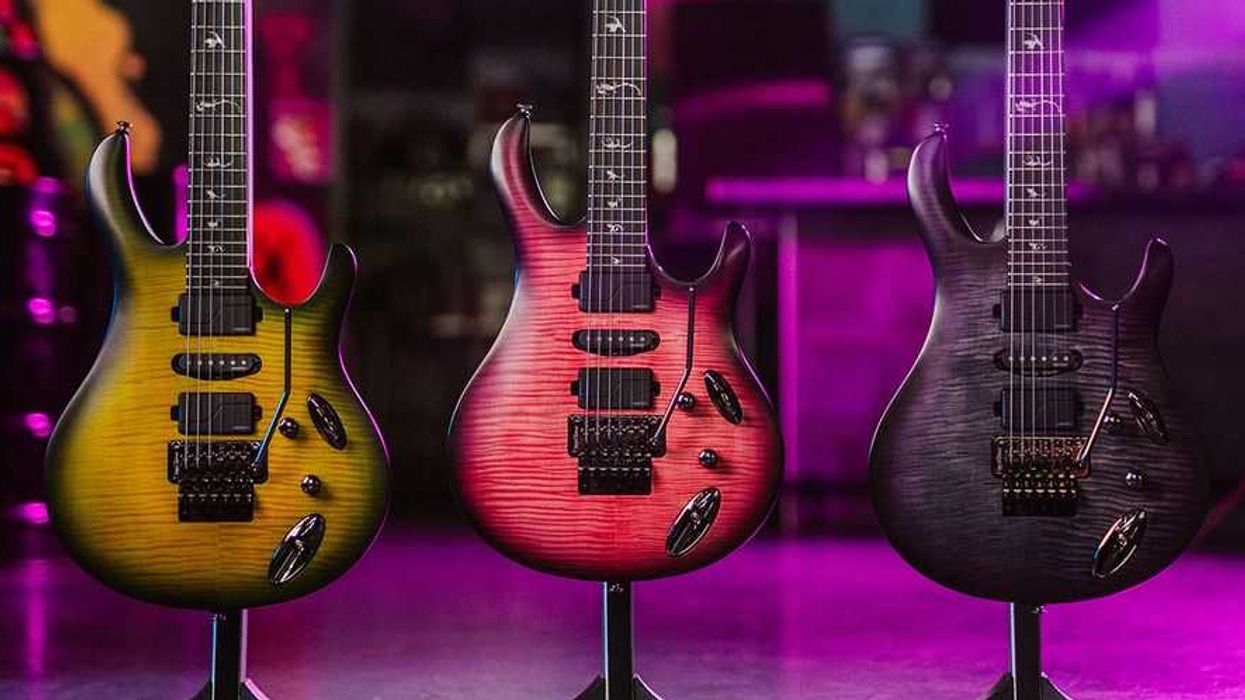
PRS Guitars today announced several new SE Series models and the David Grissom signature DGT 15 amplifier as a combo. Along with the debut of the SE version of Herman Li’s signature model Chleo, the fresh models include the SE DGT Standard and the SE CE 24 Standard Satin Stoptail. 2026 also brings a construction update to the SE Hollowbody Standard, SE Hollowbody Standard Piezo, and SE Hollowbody II Piezo. Rounding out the launch, the DGT 15 amp brings the acclaimed tone and versatility of the DGT 15 head into a convenient, combo format.
SE CHLEO
The SE Chleo is the result of an intimate collaboration between PRS Guitars and award-winning guitar player Herman Li. Best known for his work as one of the lead guitar players in the power metal band DragonForce, Li is a demanding guitarist known for his fast and precise playing style. Based on the exclusive 2025 PRS Chleo Limited Edition, this SE signature model is a unique guitar in the PRS lineup designed with the modern metal guitarist in mind. The SE Chleo boasts the same Fishman Fluence Signature Series Omniforce Herman Li pickups as the Limited Edition that preceded it. With three distinct voices and a versatile switching system, the guitar offers up to 13 unique tone combinations.
“With the PRS SE Chleo, we set out to create the best affordable guitar that delivers a unique combination of effortless playability, outstanding craftsmanship, and versatile tonal range. It combines modern innovations with classic style, giving players the tools they need to create everything from classic tones to cutting edge new sounds. The SE Chleo proves that a world-class instrument doesn’t have to break the bank—it’s a guitar that brings high-end performance within reach for everyone,” said Herman Li.
In addition to the Charcoal Purple Burst and Orchid Dusk that the Limited Edition models were offered in, the SE Chleo introduces a third color, Mantis Burst.
SE DGT STANDARD
The SE DGT Standard brings David Grissom’s signature model to a stripped-down, all-mahogany platform, delivering organic tone, rich resonance, and bold midrange presence, all at a price that comes in slightly below the SE DGT. The SE DGT Standard adds warmth and growl to the model’s signature clarity and articulation. Like the SE DGT, the SE DGT Standard offers a versatile control layout with individual volume controls for each pickup, a master tone control with push/pull coil tap, and a PRS tremolo.
SE CE 24 STANDARD SATIN STOPTAIL
The SE CE 24 Standard Satin is now offered in a stoptail option. The SE CE 24 Standard Satin Stoptail joins its tremolo counterpart as the lowest-priced guitar across all PRS models, at just $499 USD. This new version brings the snap and response of a bolt-on guitar into an all-mahogany body for a warm, focused tone, now paired with the rock-solid stability of a stoptail bridge. Loaded with 85/15 “S” pickups and a push/pull tone control for coil tapping, the SE CE 24 Standard Stoptail packs impressive versatility, whether players are chasing classic humbucking growl or snappy single-coil sparkle.
UPDATED MODELS
Through close work with Cortek, PRS has updated the construction process of the PRS SE Hollowbody models. The center section is cut from solid mahogany, as opposed to bending the sides, so the body shape is now “fully PRS.” The SE Hollowbody II Piezo’s top and back are still made with 5-ply laminated maple for strength and rigidity. The PRS SE Hollowbody Standard models keep their all-mahogany build, while also benefitting from this construction update.
This construction method also allows more color options, so Vintage Sunburst has been added into the lineup on the PRS SE Hollowbody II Piezo. With the SE Hollowbody II Piezo, players can plug into the “Mix/Piezo” jack and use the individual volume controls to blend the 58/15 LT “S” pickups with the piezo’s acoustic tones. Alternatively, players can plug into the jacks separately, so the guitar can run magnetic pickups into an amp and run the piezo through an acoustic amp or DI into the soundboard.
DGT 15 COMBO AMP
Designed in close collaboration with guitarist David Grissom, this 15-watt, single-channel amp delivers vintage-inspired tone and gig-ready portability—all in one compact package. The built-in master volume and 3-position bright switch allow for detailed tone shaping at any volume level. Additional features include a 3-band tone stack (treble, middle, bass), boost, tube-driven reverb, top cut, presence, and tremolo. Like on the head version, it is not just the controls, but the combination of the controls and control parameters that bring out this amp’s functional versatility. For example, the bright switch can be set to on, off, or on except when the boost is engaged, so players can intricately manipulate the amp’s high-end. The Master Volume can be set to be on, off, or on only with the Boost. The included 3-button footswitch allows control of the boost, reverb and tremolo.
"I’m very excited the DGT 15 is now available as a combo amp! With a tweak to the circuit and a lot of work on the cabinet design, the combo has a tight, robust low end and a slightly more open tone than the head/cab version, all in a lightweight 1x12 combo format,” said David Grissom.
PRS Guitars continues its schedule of launching new products each month in 2025. Stay tuned to see new gear and 40th Anniversary limited-edition guitars throughout the year. For all of the latest news, click www.prsguitars.com/40 and follow @prsguitars on Instagram, Tik Tok, Facebook, X, and YouTube.
Stompboxtober 2025: Mr. Black Pedals

Stompboxtober rolls on! Enter today for your chance to WIN the DoubleTracker Stereo from Mr. Black — true stereo double‑tracking that brings lush depth, detune magic, and studio-grade dimension to your sound. Don’t forget to come back tomorrow for the next pedal giveaway!
Stompboxtober 2025 - Win Pedals All Month Long!
Mr. Black DoubleTracker Stereo
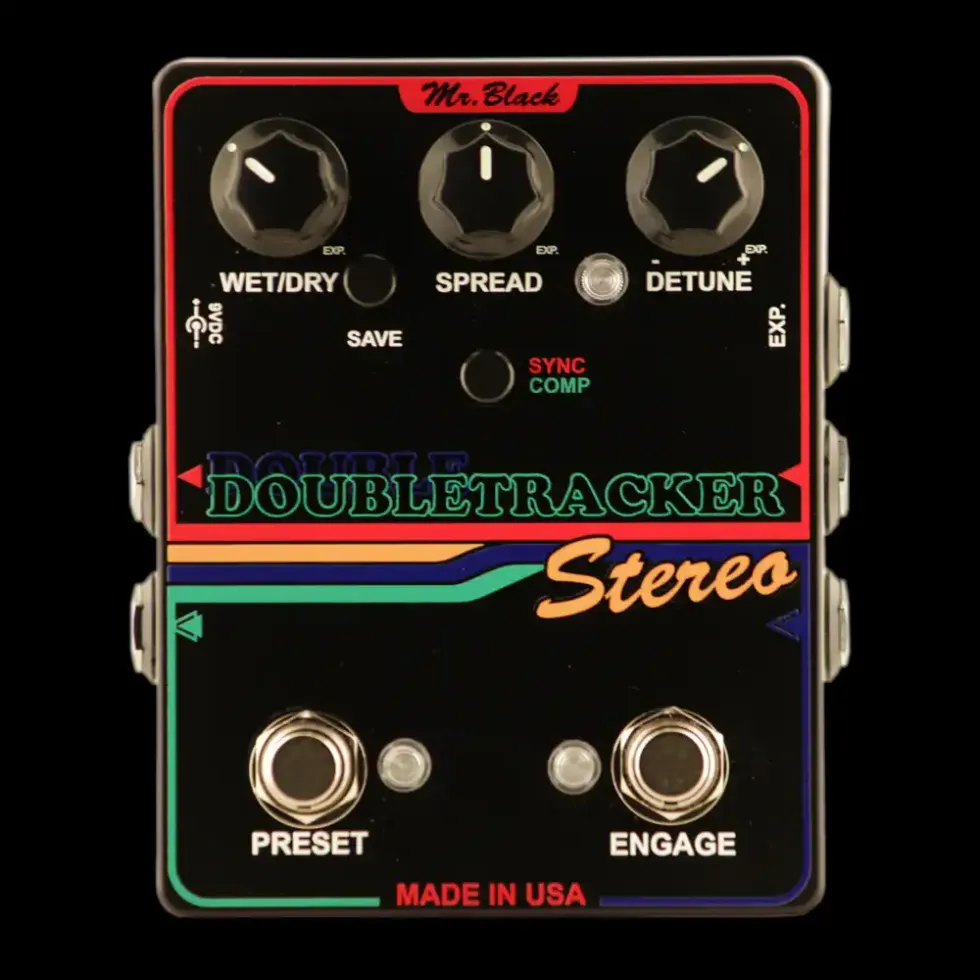
The DoubleTracker Stereo delivers lush, organic stereo doubling with adjustable delay, pitch, and spread. Featuring dual isolated paths, intuitive controls, and unique SYNC/COMP modes, it adds depth and dimension to any instrument—perfect for guitar, bass, keys, vocals, and studio work. It’s not chorus. It’s Double Tracking. $279.95 Street
Mod Garage DIY Guitar Makeover: First Steps and Needle Files
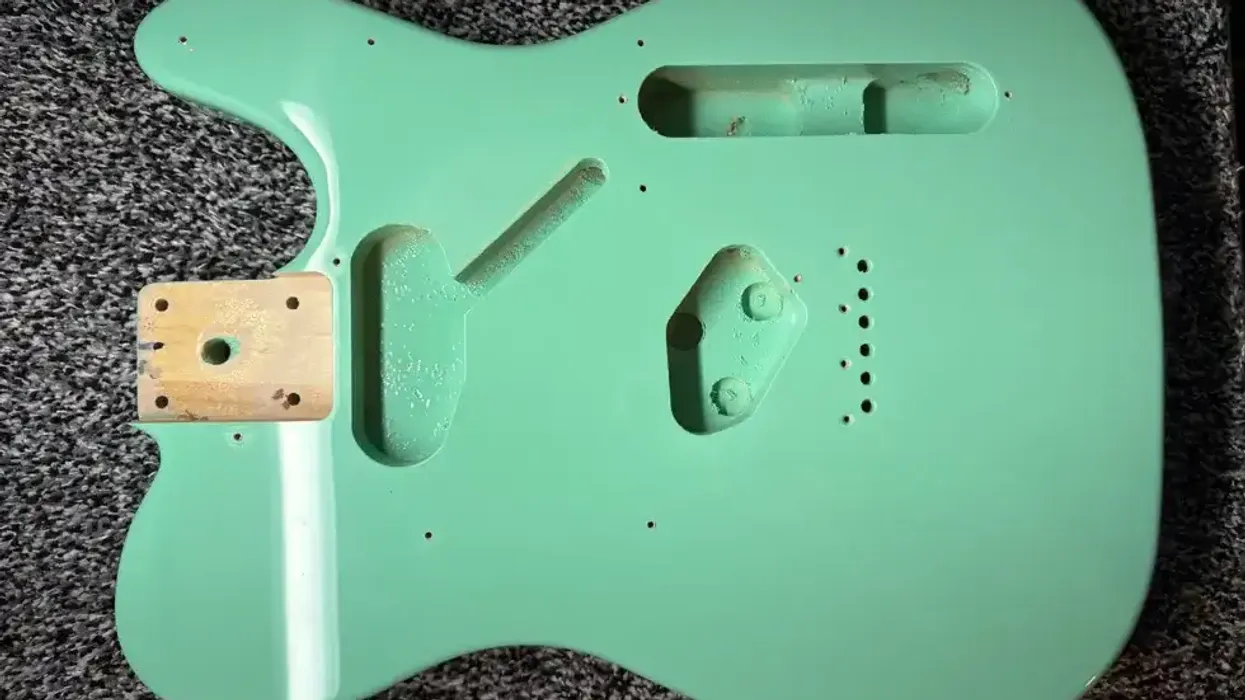
Hello, and welcome back to another installment of Mod Garage. My homework for this month’s column was to completely disassemble last month’s Harley Benton guitar, and as expected, there were some surprises under the hood.
The first surprise hit me while taking off the factory-installed strings. While doing so, all six string ferrules fell out of the body onto the floor. While it’s not a rare scenario that the ferrules on a Telecaster can be pulled out easily, this was special. It’s not a big problem, because with the strings installed, the string tension will hold them in place, but who wants to search for the string ferrules on the floor every time you need to change the strings—especially on a dark stage floor in the middle of a gig? This is not custom-shop grade, so it was the first issue on my list.
After measuring the diameter of the drilled holes in the body and the ferrules, it was clear why they fell out: The holes are a lot larger than the diameter of the ferrules. It was clear that I can’t glue them in for a better fit, nor use tape to compensate. There were only two real solutions: close the holes in the body with wooden dowels and drill them again, or use different ferrules matching the diameter of the holes in the body. The stock bullet-shaped ferrules are very cheaply made, so I decided it wasn’t worth the work to save them. I ordered a new set of ferrules with a larger diameter than the holes in the body (making an existing hole bigger is much easier and less work than filling it and starting from zero). I picked a standard set of vintage protruding ferrules—the first $12 on our bill.
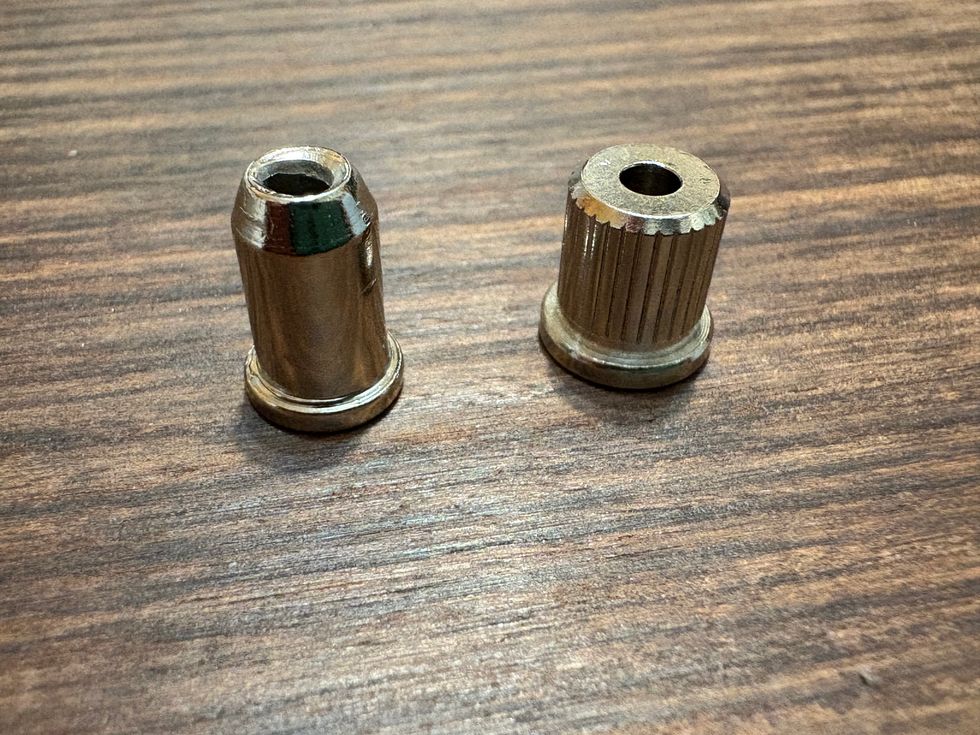
This wasn’t the best start, but it is what it is! After taking the guitar apart completely, I made a game plan. Visually, I want to keep it mostly vintage looking, but with a modern twist to get the best of both worlds. I decided to age the hardware only slightly to give it a used and worn look, but with no rust or artificial damages. Same with the body and neck—while the neck already has a satin-matte look, the body is very shiny and glossy. I’ll break the shine, giving it a matte and used look but without cracks or damage. This will lend the color a much more pleasing vintage appearance, and it’ll feel much better compared to the high-gloss finish. The complete guitar weighs only 7.2 lbs (3.3kg), which is really lightweight for a Telecaster. I really like light electric guitars, so I’ll attempt to shave off even more weight during this process.
Let’s start with analyzing the body of our guitar to see what we have. It’s easy to see that saving time and cutting costs were principal directives—which is understandable given the price of the guitar. Let’s love it for what it is rather than hating it for what it isn’t. The rough-hewn body is very lightweight and made out of basswood, which is not a traditional “tonewood” for electric guitars. It’s the first choice for carving and woodturning work of all kinds because it’s relatively soft; easy to work with, but solid. From the neck pocket’s vantage point, we can tell that the body isn’t made of one or two pieces of wood, but of many, many more. In the neck pocket alone, I can count four pieces, and I wouldn’t be surprised if the body is made out of 15 pieces or even more, so I think we can call it stave-glued. We can also glean some more information from the neck pocket: It’s not only stave-glued, but also laminated horizontally in several layers, and the paint is ultra-thick—a trait you can notice around every drilled hole on the body.
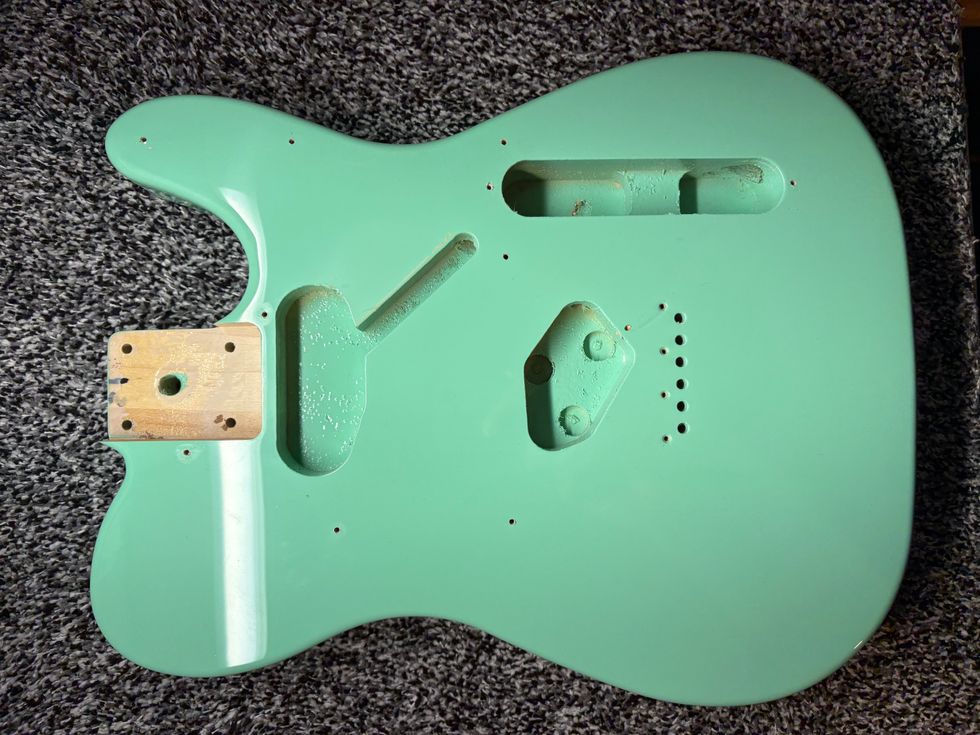
With these qualities in mind, let’s repeat some common internet guitar knowledge (CIGK) and make some assumptions about this instrument:
- A lightweight electric guitar will have no sustain and a thin sound.
- Basswood isn’t tonewood, so it won’t sound very good.
- It’s a multi-piece body, which will make it sound worse.
- The ultra-thick polyurethane finish kills tone because the wood of the guitar can’t breathe and resonate freely.
According to all this online wisdom, we have the worst guitar one can think of, right? Ignoring all these assumptions, one could argue it’s an excellent body because it’s extremely solidly made (stave-glued and laminated), armored under a thick and glass-like layer of ultra-resilient polyurethane finish, yet still lightweight. By the end of our project, we’ll see what’s fact and what’s fiction, but we have plenty of work to do first.
Here is a list of fixable issues to be addressed:
1. There is a lot of paint in almost every hole in the guitar, often paired with fringed wood fibres from the drilling process.
2. There is a lot of wooden debris, primer, and paint in the neck pocket, as well as a 10mm hole.
3. The depth of the bridge pickup’s cavity is relatively shallow.
4. Inside the electronic compartment there is a massive block of wood.
These will be the first steps to enhance the quality of the body, with the first being the easiest one. You don’t need much for this, just some half-round files in different sizes, a countersink, some old newspaper, and, of course, some time.
I assume they used worn-out, blunt drill bits in the factory, which would explain this mess. They first drilled the holes, with little care for the result, then painted over afterwards, preserving all the fringed wooden fibres under a thick layer of paint. Luckily, this is easy to correct. Cover your workspace with some old newspapers, place the body on it, and clean all the holes with a half-round needle file before using a larger one to clean the hole for the output jack.
This was the meanest one on this guitar—I was really surprised how much stuff came out of it after some passes with the file. After all the holes are cleaned and free of any paint and debris, use a sharp countersink to carefully clean the tops of all the holes. Don’t use any machine for this, just a countersink, your hands, moderate pressure, and two passes for every hole. Because the paint is really thick, it’s easy to chip off some color, so it’s important that your countersink is really sharp and you don’t apply too much pressure.
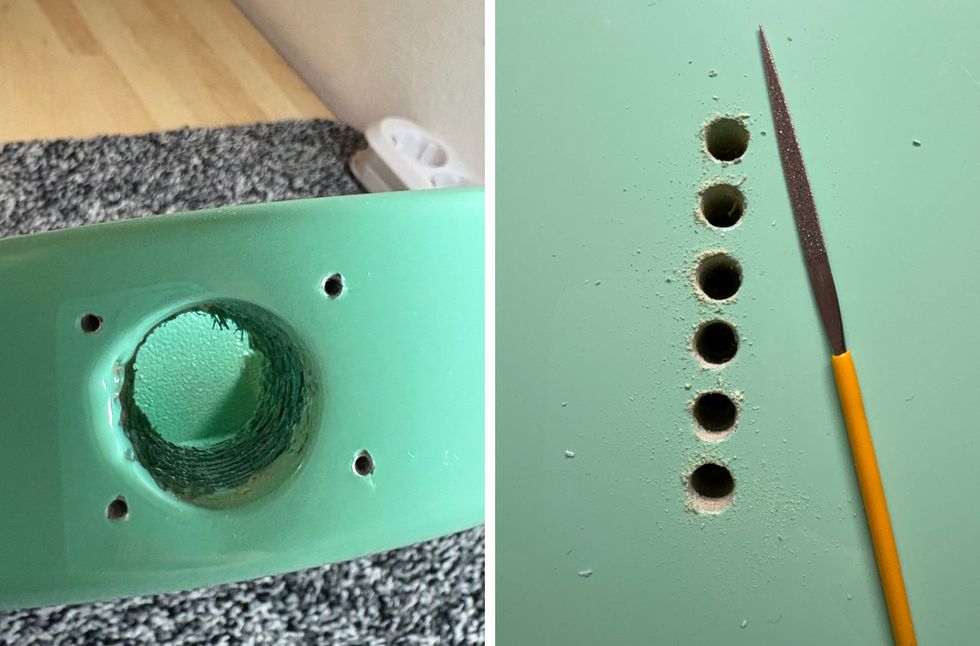
This was a good start! Next month, we will continue with the second task on our list: cleaning the neck pocket, which is a very important step. Stay tuned, and remember, our $352 budget is reduced to $340 because of the new ferrules I bought.
Until next month ... keep on modding!
Geezer Butler to sell signed amps used at Black Sabbath’s final show

Fancy owning a piece of Black Sabbath history? Well, you’re in luck – Geezer Butler has hand-signed 15 amps amps used during Sabbath’s grand Back To The Beginning farewell show, and they’ll be available to buy on Reverb next week.
The 15 amps on offer are Butler’s very own Head of Doom Bass Magnifier created in partnership with Ashdown Engineering. The amps boast 600 watts of power, with a 9-band EQ, Sub-Harmonic generator, as well as the signature Doom control, which offers a 12AX7 preamp stage for rich harmonic distortion.
The amps also come with dual inputs for passive/active basses, as well as a pair of illuminated VU meters, footswitchable EQ settings. So it’s a quality amp… which also happened to be used during the most important show in Sabbath history.
As well as being signed by Butler, each amp will also come with its own certificate of authenticity.
 Credit: Ashdown Engineering/Reverb
Credit: Ashdown Engineering/Reverb
If you don’t manage to get your hands on a genuine Back To The Beginning amp next week, don’t worry. Ashdown Engineering will also be offering a new speaker cabinet in line with Butler’s creative input. The Cab Of Doom will be a made-to-offer cabinet, handcrafted to the same specs as those used during Sabbath’s final show.
The Cab Of Doom cabinets will be 2×15” and 2×12” cabinets, with 300 watts RMS at 8 Ohms and a custom medal grill screen-printed with Geezer’s signature fallen angel artwork. The Cab Of Doom will serve as Ashdown’s third collaboration with Butler, joining the Head Of Doom amp and the Pedal Of Doom.
For those keen to know when the Head Of Doom amps officially go on on sale on 14 October, you can sign up here.
 Credit: Ashdown Engineering/Reverb
Credit: Ashdown Engineering/Reverb
The post Geezer Butler to sell signed amps used at Black Sabbath’s final show appeared first on Guitar.com | All Things Guitar.
Own the Reimagined Mark IIC+ HRG, and the New Vintage Thiele Cabinet
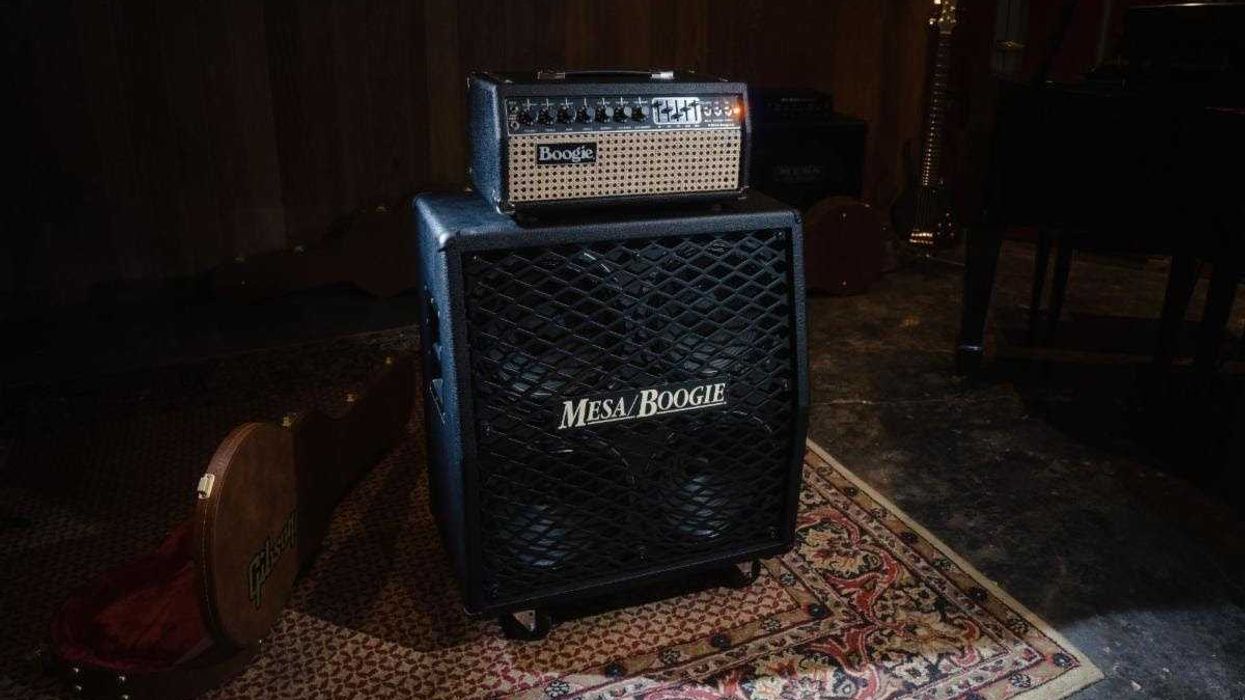
MESA/Boogie is the original boutique Home of Tone, handcrafting amplifiers of uncompromising quality from the world’s finest materials in Petaluma, California, USA. Today, with reverence and pride, MESA/Boogie has announced the arrival of the Mark IIC+ HRG and the return of the 1x12 Vintage Thiele Cabinet. The new MESA/Boogie Mark IIC+ HRG and the 1x12 Vintage Thiele Cabinet are now available worldwide at authorized dealers, Gibson Garage locations, and on www.mesaboogie.com.
“HRG harkens back to the Lagunitas Shop, where Randall Smith built every amp from an expanded menu, offering the ‘Super Sixty’ Boogie as the base model platform to build upon,” says Doug West, Director, Tone Lab, Gibson Amplifiers and MESA/Boogie. “Popular options included Hundred Watts, Reverb, and Graphic EQ, along with solid hardwood cabinetry for added beauty and durability. Using chassis codes during the build process, the two main models became the ‘SRG’ and the more powerful ‘HRG’—the fully loaded amp, sans cabinetry.
We’re excited to bring back this iconic and feature-rich Mark Series, now built on the IIC+ platform for the first time since the production Mark IIIs (and the more recent JP-2C). The result is a beast: it can play clean in Rhythm Mode at high volumes before clipping, and it tracks even tighter than the Simul IIC+ in the low end in Lead Mode, all while brandishing a ferocious ‘claw’ above it all.
With a personality all its own, the IIC+ ‘HRG’ is well worth a test drive for those seeking impressive headroom for clean work, super-tight low end for modern gain sounds, and maximum girth and authority across any style. This ‘Hun’ is no joke!”
Take a deep dive with Doug West into the history of the MESA/Boogie Mark IIC+ HRG: HERE.
MARK IIC+ HRG
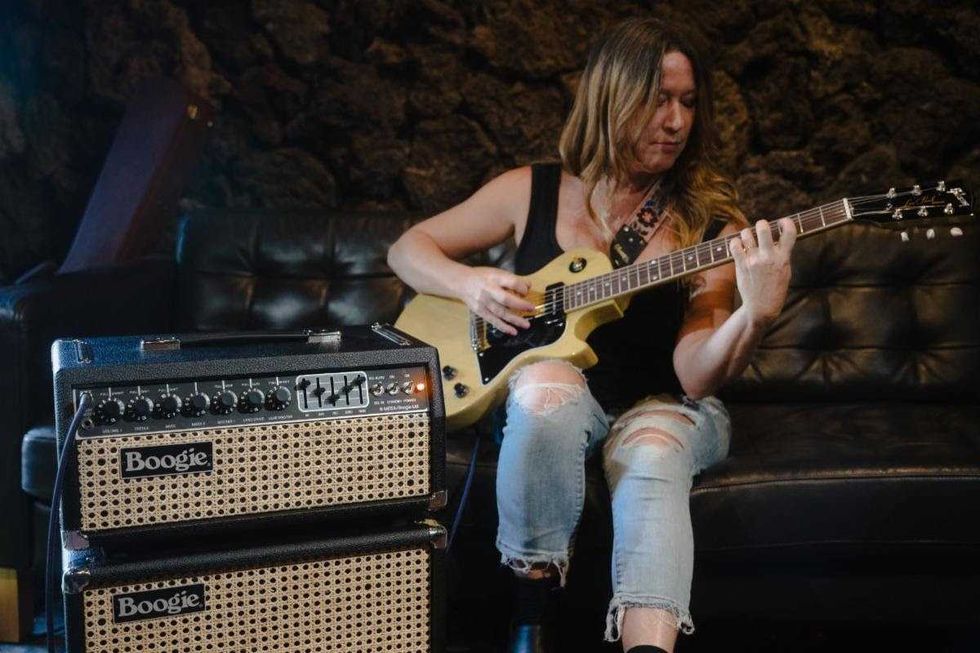
The Mark IIC + sits above the 1x12 Vintage Thiele Cabinet, both pictured in Wicker Grille.
In the history and lore of the Boogie® Mark IIC+, the HRG holds a firm and lofty place. While 75-watt Simul-Class™ builds surpassed both the Super Sixty™ and 100-Watt models in number during the original mid-80s Mark IIC+ production lifecycle, the original Mark I “HRG” format – Hundred-Watt/ Reverb/Graphic EQ, or Hun/Rev/Graph – was always classic Boogie.
With bold authority, maximum headroom, tight tracking low end, and detailed clarity, the HRG became a favorite among those seeking immense clean headroom as well as a truly commanding lead voice. As the years passed and styles evolved, the HRG’s aggressiveness for “crunch” rhythm work earned it a revered place in heavy rock and metal as well. A Mark IIC+ HRG has long been the model of choice for virtuoso guitarist John Petrucci throughout his career with Dream Theater and various solo projects. Hence, this 100-watt model provided the perfect platform for the signature JP2C that MESA partnered with John to create for his performance needs. With one of the most expressive preamps of all time and the mightiest of power sections, the HRG puts an exclamation point on the Mark IIC+ sound that is as exciting as it is unequaled. If your dream amp calls for total authority, knockout punch, and undeniable character, look no further than the mighty Mark IIC+ HRG.
1x12 VINTAGE THIELE CABINET
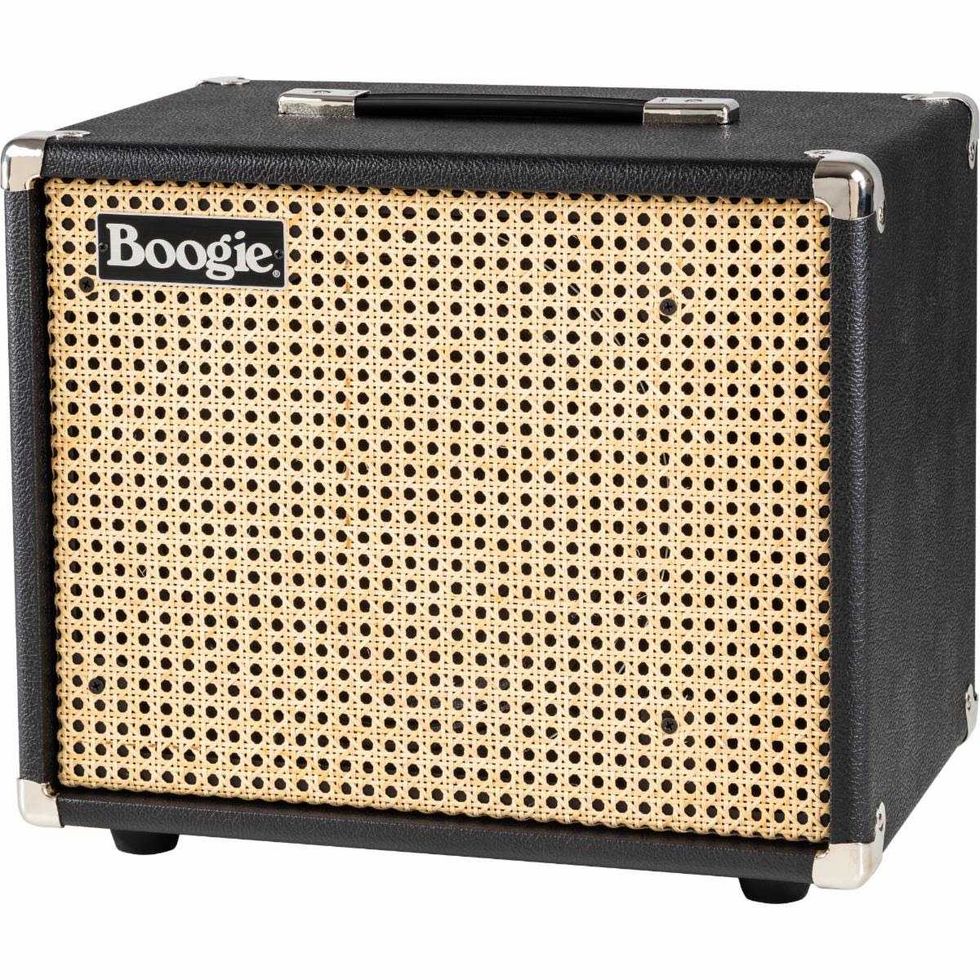
The Mark IIC + sits above the 1x12 Vintage Thiele Cabinet, both pictured in Wicker Grille.
Back by popular demand, fat tone’s secret weapon, the 1x12 Vintage Thiele Cabinet. The seen-everywhere companion to Boogie® combos and small heads in the day, this little cabinet set the tone for compact rigs, club to concert arena, throughout the decade of decadence. This compact, ported 1x12 extension—available in black vinyl grille and wicker grille—is the perfect enhancement to our latest “second build” Mark IIC+ or any Mark Series combo or head and open-back cab rig, adding focused fundamental and thumping, gut-punch low end to those exciting sounds.
While initially designed for an Electro-Voice® EVM12L speaker and introduced (under Boogie banners) in the early 80s, the Thiele’s signature sound and relevance are timeless for anyone wanting to add girth and strategic percussive lows regardless of the amp’s origin or stylistic leanings. Now loaded with our era-appropriate proprietary Celestion® C90 speaker, the 1x12 Thiele delivers more than ample low-end punch yet responds with a forgiving, overdrive-friendly voice that adds today’s heavier styles to its originally versatile can-do list.
“While we’re feeling nostalgic, we wanted to bring back one of the iconic 1x12 Boogie cabinets to celebrate the excitement surrounding the IIC+—the Boogie Thiele 1x12 Extension,” says Doug West, Director, Tone Lab, Gibson Amplifiers and MESA/Boogie. “This sealed and ported design became synonymous with huge tone in the ’80s, when players and artists alike discovered it was a secret weapon for delivering massive low end far beyond its physical footprint, along with a tight, punchy overall sound.
We’re excited to offer this mighty little cab once again, now paired with a more forgiving and era-appropriate speaker—our proprietary Celestion C90—to complement the ‘HRG’ IIC+ and other compact Boogie rigs, especially as easy transport becomes increasingly important to players.”
“Not a day goes by when I don’t ask myself, why am I here and not them?”: Ozzy Osbourne’s posthumous book reveals he was haunted by Randy Rhoads’ death for the rest of his life
![[L-R] Ozzy Osbourne and Randy Rhoads](https://guitar.com/wp-content/uploads/2023/11/Ozzy-Osbourne-Randy-Rhoads@2000x1500.jpg)
From 72-hour benders to knocking back four bottles of cognac a day, Ozzy Osbourne lead a wild life. In fact, in his posthumous memoir, Last Rites, the Black Sabbath frontman labels himself a “world-class” addict – he binged and smoked so much that he was left wondering just how his body managed to keep going for 76 years.
“If I were to go to bed tonight and not get up tomorrow, no one would be surprised,” he reflects in Last Rites. “Death’s been knocking at my door for the last six years louder and louder… At some point I’m gonna have to let him in.”
However, every passing day came with a bitter note of sadness. While he was managing to evade death, he was constantly aware of his peers who weren’t as lucky – namely his guitarist Randy Rhoads, who died in a plane crash in the ‘80s.
Rhoads would perform as Ozzy’s guitarist for three years up until his death in the fatal crash in 1982, which also saw the death of makeup artist Rachel Youngblood and the pilot. The pilot had been attempting to ‘buzz’ over Ozzy’s tour bus and wake him up, but a false move lead to the plane clipping the bus and crashing into a house.
From his 42-pill a day habit to admitting he was stoned during every episode of The Osbournes TV show, Ozzy was constantly haunted by how he was still living, while Rhoads was not.
“Not a day goes by when I don’t ask myself, why am I here not them?” Ozzy writes in his Last Rites. “I had 70 great years, which is a lot longer than I ever expected or probably deserved.”
However, in a statement announcing the memoir, Ozzy admitted he wouldn’t change anything about his life. “People say to me, if you could do it all again, knowing what you know now, would you change anything?” he said [via NME]. “I’m like, fuck no.”
“If I’d been clean and sober, I wouldn’t be Ozzy,” the statement continued. “If I’d done normal, sensible things, I wouldn’t be Ozzy. Look, if it ends tomorrow, I can’t complain. I’ve been all around the world. Seen a lot of things. I’ve done good… and I’ve done bad.”
Elsewhere in his memoir, Ozzy also recalls how the “unofficial leader” of Black Sabbath, guitarist Tony Iommi, first dealt with losing his fingertips. “He just invented himself a set of new fingertips using an old Fairy Liquid bottle, then re-taught himself how to play,” he writes.
Another section also sees Ozzy admitting that taking Van Halen on tour might have been a mistake. “You wanted your support act to be good, but didn’t want to upstage yourself,” he admits. “[We would go] back to our dressing room in silence and just sit there, staring at the fucking wall. [Every night],Van Halen just slaughtered us.”
Last Rites is out now.
The post “Not a day goes by when I don’t ask myself, why am I here and not them?”: Ozzy Osbourne’s posthumous book reveals he was haunted by Randy Rhoads’ death for the rest of his life appeared first on Guitar.com | All Things Guitar.
Klon Centaur maker’s lawsuit against Behringer has been dismissed

After Behringer launched the $69 Centaur Overdrive last year, Bill Finnegan – creator of the original Klon Centaur, sued the brand’s parent company Music Tribe over “blatant counterfeit”.
News of the suit spread quickly in the guitar world, and some Behringer Centaur Overdrive units were being listed on the second-hand market for up to $2,000, with collectors preempting a discontinuation and rise in scarcity.
In the following days, Behringer changed the name of the unit from Centaur to Centara, and made a number of visual changes, like putting the Behringer logo on the pedal’s front face, and changing the graphic design of the centaur. Quietly since, the name of Behringer’s pedal has again been changed to ‘Zentara’.
The dispute went quiet in recent months, but it’s now been revealed that the case has been dismissed by the United States District Court for the District of Massachusetts.
A court document confirming the lawsuit’s dismissal is available to read on CourtListener – although it doesn’t provide much information other than the fact the case has been dismissed, and that there are no costs incurred to either party.
Though purely speculation, it’s possible Behringer/Music Tribe and Bill Finnegan reached an out-of-court settlement, either monetarily or through an agreement which stipulates the conditions upon which Behringer can continue to sell the Zentara.
Guitar pedal clones are very common, with brands issuing their takes on classic units commonplace. In terms of the legalities of pedal clones, it’s not possible in most cases to patent the design of an electronic circuit, so pedal makers protect their products via trademarks regarding their trade dress – effectively how a product looks.
In his lawsuit against Behringer, Bill Finnegan noted that “consumers expressed extensive actual confusion… with many rushing to purchase Defendants’ counterfeit pedal believing Defendants are delivering on a mass scale a discounted product licensed or endorsed by Plaintiffs”.
It’s worth noting, though, that – in the US – trademark laws are written so that if a company doesn’t enforce its trademarks, it marks it harder for them to fight future cases of infringement.
This formed the basis of Dean’s defence in its legal battle against Gibson, as it argued the guitar giant had taken too long to enforce its trademarks. In that case, Gibson’s award after triumphing was recently upped from $1 to over $168,000.
The post Klon Centaur maker’s lawsuit against Behringer has been dismissed appeared first on Guitar.com | All Things Guitar.
Ken Parker – iconic luthier behind the groundbreaking Parker Fly – has died at 73

Ken Parker – legendary luthier and creator of the Parker Fly – has died aged 73, days after launching a GoFundMe to help pay for his cancer treatment.
A statement on Parker’s website confirms he passed away peacefully at his home in Gloucester, MA on October 5, 2025, with his life companion Susan Kolwicz by his side.
Ken Parker recently announced his retirement from luthiery, after revealing he was diagnosed with cancer in early 2023, and that the illness steadily eroded his ability to work.
“It hasn’t been easy living with this nasty disease, having chemo treatments that zapped my energy and slowly took away my ability to earn a living,” he wrote.
“Now, I’m on a breathing machine 24/7 and I’ve started to lose the use of my left arm. I humbly ask for your support to reduce the medical and personal debt that I’ve incurred and to help with my family’s expenses.”
Reflecting on his career, Parker added, “Throughout my life, I’ve done something that I love and am proud of – making guitars that advance the art, science and craft of building far beyond traditional methods. Most importantly, it has been a true joy and especially gratifying experience to see my guitars in the hands of all of you gifted and aspiring players, and I thank you for that opportunity.”
In a YouTube video posted earlier this week, Parker revealed he’d been spending much of the past year passing on his knowledge and expertise to his colleague Sam Krimmel.
“Sam has this gift which feels remarkably similar to the gift that I feel that I have that’s allowed me to do my work,” he said. “I’ve never had a deeper and more interesting work relationship on a daily basis than I have with Sam, and we work together very, very well.”
Born August 25, 1952, Ken Parker built his first guitar from wood and cardboard aged just 13, and later an electric bass for his brother Alan.
In the early ‘70s, Parker moved to Rochester, NY, to work with furniture maker Richard Newman, where he designed his first archtop guitar. He later began working at Stuyvesant Music on instruments for a number of high-profile musicians.
Parker opened his own shop in Connecticut in 1983, working with stringed instruments including violins, cellos, Renaissance lutes and vintage and contemporary guitars.
1990 saw the launch of Parker Guitars – co-founded by both Ken Parker and Larry Fishman. The brand would later launch the iconic Parker Fly in 1993, a radically innovative electric guitar featuring a composite material body and a hybrid pickup system.
Perhaps one of the most high-profile endorsees of the Parker Fly was former King Crimson man Adrian Belew, who had his own signature model.
Ken Parker’s GoFundMe is still active at the time of writing, having raised $134,000 of its $450,000 goal.
“Ken’s family is still faced with a great deal of debt,” a statement on the page writes. “So, please, continue your contributions in Ken’s honor… they will be greatly appreciated.”
Learn more at GoFundMe.
The post Ken Parker – iconic luthier behind the groundbreaking Parker Fly – has died at 73 appeared first on Guitar.com | All Things Guitar.
A love letter to the acoustic guitar: thank you from my calloused fingers

As a guitar player of twenty years or so, there’s one instrument that I keep coming back to: the acoustic guitar. Graduating from the half-size classical guitar I started on, my eyes were set on a solid-body electric and a high gain amplifier that felt like a natural progression for me as a young rocker.
Instead I was presented with a dreadnought acoustic, as primarily a test of my commitment to the instrument, but an unknowingly practice tool that I would come back to time and again. Much like walking with ankle weights or cardio in the swimming pool, the acoustic guitar can serve as a form of resistance training.
This makes movement and technique more difficult, and while it boxes you into building muscle, it’s also training you to listen to what sounds right at its core, i.e. tuning, fretting and timing for consistency and dynamic. For the hours of practice I spent on this guitar on those formative years of playing, I want to say thank you.
For any beginners reading, that acoustic guitar you’re struggling with is doing you a lot of good, and for more experienced players, it might be good to get back into the habit of acoustic practice to keep those chops up!
This is for a few reasons, the first being that while those of us who grew up aspiring to be amplified rock gods, the electric guitars we strived after often had smaller gauge strings, coupled with a lower action to make it easier to bend notes and jump around the fretboard. The acoustic guitar we had kicking around the house usually had some heavy and old strings, the higher action making it an overall more difficult beast to wrangle.
But here’s the kicker: having to get my practice routines right on an acoustic guitar gave me more dynamic ability in both my picking and fretting hand, as well as calloused fingers and muscles in my arms and hands that made my eventual flitting around the neck of an electric guitar feel like child’s play.
 Image: Adam Gasson
Image: Adam Gasson
Harder to play
Conventionally, in E Standard, an electric guitar might be strung with .009 or .010 gauge strings, often nickel wound at the highest end, acoustic guitars instead using steel or bronze strings and often being .012 or .013 in size in the same tuning. This means it’s a little more difficult to fret, to bend notes and barre chords, but this can form an important part of your practice routine.
Improperly fretted notes can buzz and ring, requiring you to really push down and move between every note like you mean it. Lighter gauges allow a little more freedom for bending, but your bends on an acoustic really need to be bent right up to the intended pitch, an acoustic guitar often being played without additional effects or other processing to mask your imperfect playing. Bent notes might warble and ring until you get them right, and you best believe your acoustic guitar won’t let you get away with it like an overdriven electric guitar.
 Image: Adam Gasson
Image: Adam Gasson
Can’t hide behind effects
This leads me to my second point, the acoustic guitar generally being a mostly unprocessed instrument, meaning there’s no distortion, delay or chorus to make you sound better than you are! Effects are good for augmenting a great performance, and what makes for a great performance? Consistent practice.
Distortion and drive will compress and attenuate your playing which might lead to inconsistent picking, but the acoustic guitar will leave your playing exposed, forcing you to focus on accuracy, consistency and tonality. You’re also forced to assess the relationship between your picking and fretting hand. Buzzing frets or scratchy picking are laid bare on your trusty steel string acoustic.
 Image: Adam Gasson
Image: Adam Gasson
Campfire test
All of this is in the pursuit of practicing enough to sound good on an acoustic guitar, and this isn’t entirely unlike the renowned “campfire test” for songwriters. The “campfire test” is simple: a good song will work whether it’s performed with a full backing band or around a campfire with just an acoustic guitar and a vocal. While the additional layers and harmony are there to expand on the emotional and musical impact of your song, if they instead act as a crutch for your song, well, you might have some work to do.
Practicing on an acoustic guitar borrows from this same thought process, stripping away everything except your skills, timing and talent, and forces you to focus on your playing without augmentation. Your playing shouldn’t rely on effects as a general rule of thumb, though we’ll exclude players like Kevin Shields from this. As you were, shoegazers.
All of this is to say, that while I struggled, fumbled and cussed through hours of practice with my acoustic guitar, every minute has made me a better guitar player because at a foundational level it taught me to play every note like I mean it, bend right up to pitch and beyond, and gave me great dynamic control of my picking hand. Without distortion and overdrive hiding fumbled picking, or reverb and chorus clouding my timing, I was able to focus on my technique and playing, and you can ensuring you’re getting the most out of your practice. And hey, while there’s a case to be made for practicing with the gear you’ll play live, the acoustic guitar will always be there to go back to; and somehow it’ll never seem to get easier to wrangle.
The post A love letter to the acoustic guitar: thank you from my calloused fingers appeared first on Guitar.com | All Things Guitar.
Stompboxtober 2025: Gator Cases

Go big or go home! Today’s Stompboxtober prize is the Gator Kicker Series large pedalboard—a road-ready rig with space for your entire arsenal. Enter now for a chance to win, and don’t forget to stomp back tomorrow for another giveaway!
Stompboxtober 2025 - Win Pedals All Month Long!
Gator Cases Black Aluminum Pedal Board; Large w/ Carry Bag
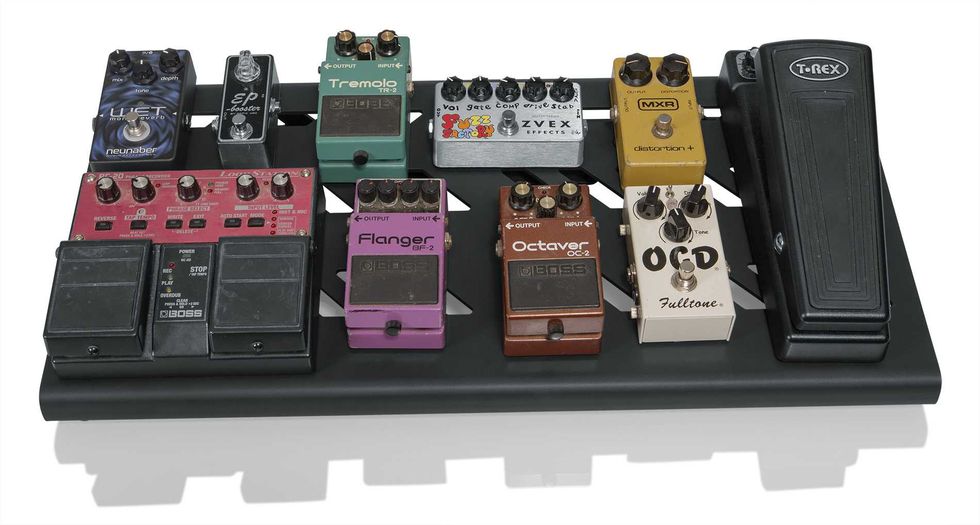
Black Large aluminum pedal board with Gator carry bag and bottom mounting power supply bracket. *Power supply not included.
The Kicker Series Pedalboards bring style and function to your setup with bold color options—black, orange, green, and white. Built from lightweight aluminum, the large board offers a roomy 23.75" x 10.66" surface angled for easy pedal access and designed with cable-routing perforations to keep your rig clean. A universal mounting bracket fits most common power supplies beneath the board, while no-slip rubber feet keep everything stable. Every Kicker board comes ready to hit the stage with adhesive Velcro strips and a deluxe carry bag featuring a reinforced top and bottom, plus a removable shoulder strap. $199.99 Street Price

Gator Large Pedalboard with Bag - 23.75x10.6-inch Black
Bezard Guitars Introduces the Famine 6 Electric Guitar
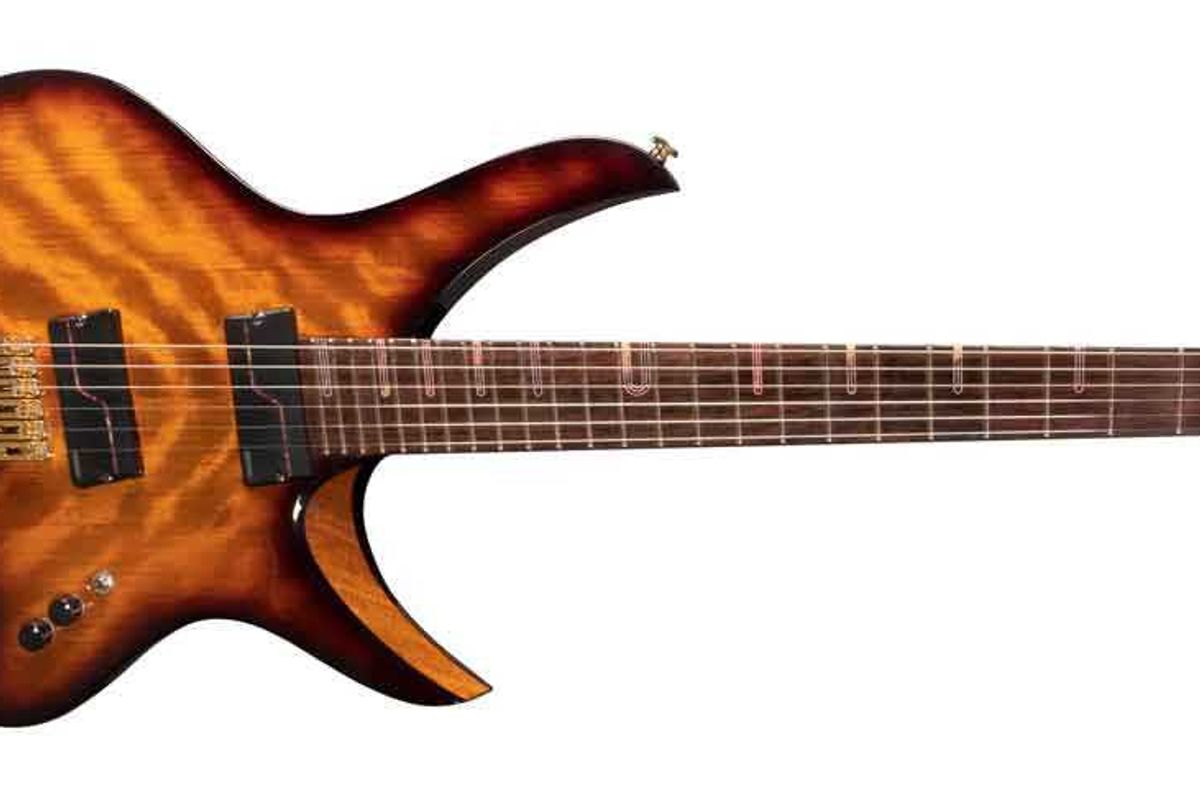
Bezard Guitars has introduced the Famine 6, a striking new electric guitar that is built to be as visually captivating as it is sonically versatile. Its name is derived from the second horseman of the apocalypse, and the Famine 6’s ultra-light, slim design is crafted to melt seamlessly into the player’s body.
The body of the Famine 6 features a carefully chosen blend of tonewoods. Its mahogany body is complemented by Port Orford Cedar decorative veneers, with a tobacco sunburst finish enriched by striking red and gold resin inlay. As each guitar is built to order, other wood options and finishes are available. The back is radiused at 47 inches, while the top carries a 23.5-inch projection radius that mirrors the compound fretboard radius. The neck is a graphite-reinforced mahogany laminate construction, built for strength and stability. It carries a 25.5”–25” multiscale rosewood fretboard with a 12”–20” compound radius, either stainless steel or phosphor bronze fret wire, and a custom brass or aluminum nut, combining durability, smooth playability, and elegant detail.
For electronics, the Famine 6 comes equipped with Fishman Fluence pickups, offering modern tonal versatility and clarity. Once again, as each guitar is custom built, other pickups are available depending on the player’s preference. These are wired to a three-way selector switch with volume and tone controls, providing players with dynamic tonal options suitable for a wide range of styles and genres.
The guitar is finished with gold Hipshot hardware that ensures stability, precision, and a refined aesthetic. Each Famine 6 ships in a form-fitting custom TKL hard case, designed to protect the instrument with the same care and craftsmanship invested in its construction.
The debut of the Famine 6 reflects the vision of luthier Will Bezard, founder of Bezard Guitars. Bezard’s journey began with studies at the Galloup School of Lutherie, followed by six years working alongside the legendary Rick Turner, where he refined his expertise in every facet of guitar construction. Today, he continues his work at Galloup while building his own guitars, blending technical precision with artistic expression. Bezard is dedicated to creating instruments that inspire, endure, and resonate with players on every level.
The Bezard Guitars Famine 6 is available for a base price of $7000 USD. For more information please visit www.bezardguitars.com
Hardly Strictly Acoustic—Snapshots From San Francisco’s Favorite Festival
Winnipeg’s Living Hour Control the Chaos
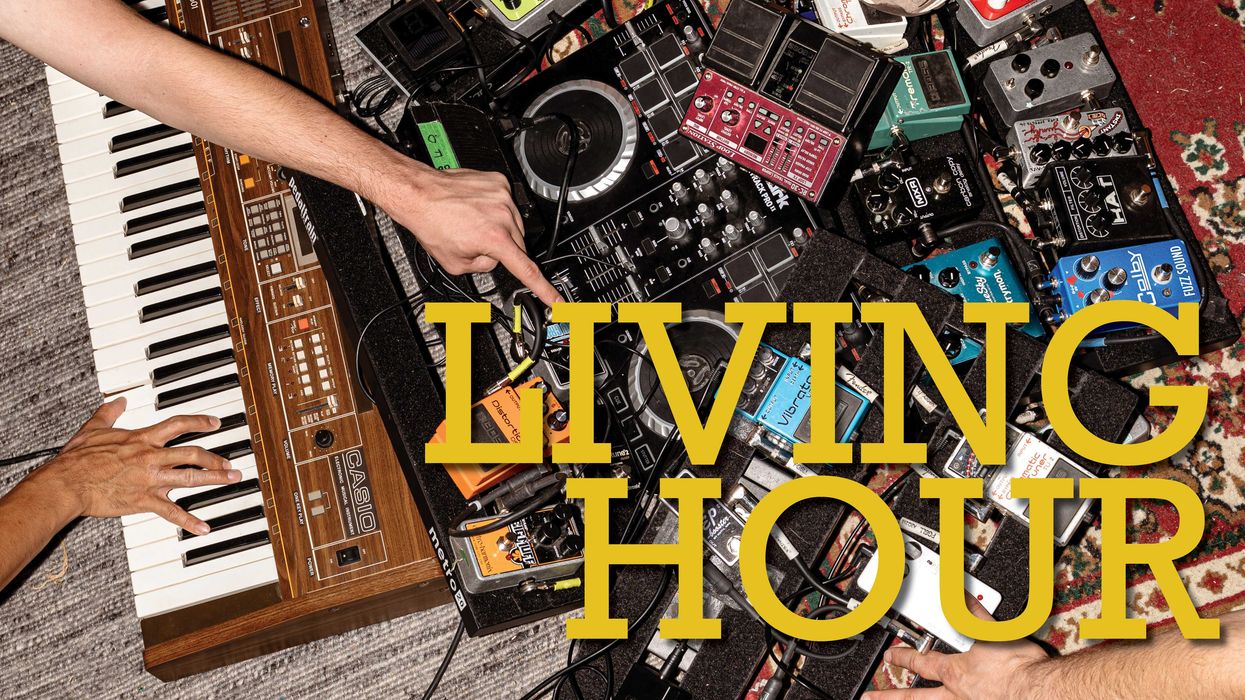
“Stainless Steel Dream,” the leadoff track from Living Hour’s fourth record, Internal Drone Infinity, begins with a manic, glitchy din. The sonic assault ends abruptly, swiftly contained, giving way to a lone bass and singer Sam Sarty's hushed opening lines: “Pink hair straightener, baby, messy messy dresser in a dark room, empty.” Less than 60 seconds goes by before the Winnipeg-based band ascends into a squall of noise and just as quickly calms themselves again. Internal Drone Infinity is defined sonically and lyrically by this tension—the push-and-pull between order and chaos, quiet and loud, inner and outer universes.

“I was thinking a lot about how anxiety and thoughts exist in your body and in the small decisions you make everyday and in what you see in the world,” Sarty says over the phone from her grandfather's house on Vancouver Island. “Your whole life is based on your perception of what you’re seeing. Then I thought about how anxiety and busy thoughts color that and affect it and change your whole life. When I’m feeling really extreme, I think, ‘Oh yeah, you could just die because a bee would buzz into your face and you’d freak out and fall off a cliff or something.’”
A typical response to existential dread is often grasping for control. On Internal Drone Infinity, this manifests in Living Hour’s gravitation toward precision in the midst of turbulence—in moments like the spiralling outro of “Wheel” or the feedback-heavy ease-in to “Big Shadow,” it’s as if the band has simply figured out how to put their hands around noise and turmoil and shape them to their whim. This move toward punchiness and away from the gentler, gauzier sounds of 2022’s Someday Is Today could be attributed to a number of things—the scientific rigor with which guitarists Gil Carroll and Adam Soloway tend to their tones, Sarty’s writing more guitar parts, or Carroll’s shift from mostly clean sounds to incorporating fuzz, distortion, and overdrive. (“Swiss army knife” multi-instrumentalist Brett Ticzon also handles a few guitar details, while drummer Isaac Tate plays one upside down on “Big Shadow”).
“We were kind of inspired by the band Superheaven, who I’m sure play their guitars through these massive stacks and get huge, huge guitar chord tones,” Soloway says. “But we were still working with our little amps, so we would be recording six different guitars doing different versions of a chord to try to make it sound as huge as possible, stacking them on top of each other.”

It’s likely, though, that the most significant change is that Sarty is confronting some of that aforementioned dread defiantly instead of turning away or opting for resignation. “Everyone’s kind of angry, we’re getting pissed, the world is fucked, and sometimes it feels like I can’t just be in a nice indie rock band anymore playing twinkly things,” Sarty says. “It’s still nice to do that, but I think there needs to be a release, a scream or a grunt or something.”
Internal Drone Infinity offers a lot of moments for that kind of release, often in the shape of incredibly sharp, layered, fuzzy freakouts—like on “Firetrap,” a Soloway joint that wrestles with the weight of the onslaught of violent images and videos online, or “Half Can,” which adds Jenna Wittman’s unsettling violin to the commotion.
Sarty’s precise sense of composition, tone, and execution likely stems from an obsessive impulse she’s had since childhood—to photograph and write about whatever catches her eye, whether it’s garbage or cheese. Combined with the fact she was writing these songs while working as a projectionist at Winnipeg’s independent movie theatre (“It’s a really cool job, because you can watch so many movies for free and you feel like a weird, twisted Gremlin”), Sarty has long been tuning her attention to small details, a practice which, like auteur cinema, creates its own dreaminess.
Gil Carroll’s Gear
Guitars
Fender American Telecaster
Epiphone Les Paul
Amps
Fender Vibrolux
Effects
Boss TU-3
Boss VB-2W
JHS 3 Series Distortion
Xotic EP Booster
Strymon Big Sky
Strymon El Capistan
Strings & Picks
Rotosound Roto Reds (.011–.048)
Adam Soloway’s Gear
Guitars
2015 Fender Classic Series ’60s Jazzmaster Lacquer with Mastery bridge
2020 Gibson SG Tribute
Amps
Fender ’68 Custom Deluxe Reverb Reissue
Effects
Boss TU-3
Electro-Harmonix POG
Fairfield Barbershop
Pro Co RAT
EarthQuaker Colby Fuzz
Boss TR-2
MXR Carbon Copy
Strymon Blue Sky
Electro-Harmonix Freeze
ZVex Instant Lo-Fi Junky
Strings & Picks
.88 mm guitar picks
.011-gauge string sets
Sam Sarty’s Gear List
Guitars & Basses
Fender Baritone Telecaster
Squier Jazz Bass
Amp
Ampeg Micro-CL
Effects
Electro-Harmonix Bass Big Muff
Korg Pitchblack XS
Way Huge Echo-Puss
Pro Co RAT
Brett Ticzon’s Gear
Guitar
Gibson SG Tribute
Effects
TC Electronic PolyTune
Electro-Harmonix Op Amp Big Muff
Boss DS-1
Electro-Harmonix Holy Grail

The low-key “Texting” maybe the most pining song on the record—which is saying something for a band that calls their music “yearn-core”—provides a poignant example of this phenomenon. The accumulation of mundane observations produces a strangeness much like that which emerges when you simply gather the seemingly disparate fragments of reality around you: “Sunwashed plastic garbage bin, blue now from the cornflower sun, handles like madonna’s nails; picking zits in Home Depot, and the tread in your shoes.” Elsewhere, there are isolated non-sequiturs (“soft chorus of cellos,” “rabbits looking”) and painful clarity: “I walk home from the movies ’cause I don’t have a car anymore / At 29, I feel sick, but I’m just getting started on my medicine.” It’s kind of like if the poet Mary Oliver had strolled the garbage-strewn and overgrown, busted-concrete back alleys of Manitoba’s capital instead of her peaceful Cape Cod forests.
“‘Texting’ is very much about Winnipeg,” Sarty says. “I was really thinking about moving during Covid, and then after I was like, ‘Okay, it’s my moment.’ But then I can never really leave. It just gets sticky.”
Stickiness—in this case, the stickiness of long-running relationships—is the tacit catalyst in this mixture that’s allowed Sarty to “come into her own as a songwriter” or for the band to record their “funnest album yet,” as Carroll notes. Closeness and intimacy—Carroll lives on the top floor in the same duplex as Sarty, whose apartment is also the band’s jamspace—plus time creates intangible and fluid dynamism. And at this point in their long collaboration, the band members are comfortable with taking the chaos of their 21st-century lives and, with each other’s help, making some order out of it.
“I can imagine a lot of bands struggle with delivering feedback about parts or when they want things to change in a song,” Carroll says. “And obviously we still have those conversations with care, and we’re gentle, but like, Solly can tell me, ‘That tone’s not working.’ Or we can say, ‘Sam, you need to tune your guitar.’ It’s good—that makes the song and the band better, and people are able to receive feedback, which I think has made our songs better, too. It’s like The Rehearsal season two. I’m Captain All-Ears when it comes to my tone.”
Winnipeg’s Living Hour Control the Chaos

“Stainless Steel Dream,” the leadoff track from Living Hour’s fourth record, Internal Drone Infinity, begins with a manic, glitchy din. The sonic assault ends abruptly, swiftly contained, giving way to a lone bass and singer Sam Sarty's hushed opening lines: “Pink hair straightener, baby, messy messy dresser in a dark room, empty.” Less than 60 seconds goes by before the Winnipeg-based band ascends into a squall of noise and just as quickly calms themselves again. Internal Drone Infinity is defined sonically and lyrically by this tension—the push-and-pull between order and chaos, quiet and loud, inner and outer universes.

“I was thinking a lot about how anxiety and thoughts exist in your body and in the small decisions you make everyday and in what you see in the world,” Sarty says over the phone from her grandfather's house on Vancouver Island. “Your whole life is based on your perception of what you’re seeing. Then I thought about how anxiety and busy thoughts color that and affect it and change your whole life. When I’m feeling really extreme, I think, ‘Oh yeah, you could just die because a bee would buzz into your face and you’d freak out and fall off a cliff or something.’”
A typical response to existential dread is often grasping for control. On Internal Drone Infinity, this manifests in Living Hour’s gravitation toward precision in the midst of turbulence—in moments like the spiralling outro of “Wheel” or the feedback-heavy ease-in to “Big Shadow,” it’s as if the band has simply figured out how to put their hands around noise and turmoil and shape them to their whim. This move toward punchiness and away from the gentler, gauzier sounds of 2022’s Someday Is Today could be attributed to a number of things—the scientific rigor with which guitarists Gil Carroll and Adam Soloway tend to their tones, Sarty’s writing more guitar parts, or Carroll’s shift from mostly clean sounds to incorporating fuzz, distortion, and overdrive. (“Swiss army knife” multi-instrumentalist Brett Ticzon also handles a few guitar details, while drummer Isaac Tate plays one upside down on “Big Shadow”).
“We were kind of inspired by the band Superheaven, who I’m sure play their guitars through these massive stacks and get huge, huge guitar chord tones,” Soloway says. “But we were still working with our little amps, so we would be recording six different guitars doing different versions of a chord to try to make it sound as huge as possible, stacking them on top of each other.”

It’s likely, though, that the most significant change is that Sarty is confronting some of that aforementioned dread defiantly instead of turning away or opting for resignation. “Everyone’s kind of angry, we’re getting pissed, the world is fucked, and sometimes it feels like I can’t just be in a nice indie rock band anymore playing twinkly things,” Sarty says. “It’s still nice to do that, but I think there needs to be a release, a scream or a grunt or something.”
Internal Drone Infinity offers a lot of moments for that kind of release, often in the shape of incredibly sharp, layered, fuzzy freakouts—like on “Firetrap,” a Soloway joint that wrestles with the weight of the onslaught of violent images and videos online, or “Half Can,” which adds Jenna Wittman’s unsettling violin to the commotion.
Sarty’s precise sense of composition, tone, and execution likely stems from an obsessive impulse she’s had since childhood—to photograph and write about whatever catches her eye, whether it’s garbage or cheese. Combined with the fact she was writing these songs while working as a projectionist at Winnipeg’s independent movie theatre (“It’s a really cool job, because you can watch so many movies for free and you feel like a weird, twisted Gremlin”), Sarty has long been tuning her attention to small details, a practice which, like auteur cinema, creates its own dreaminess.
Gil Carroll’s Gear
Guitars
Fender American Telecaster
Epiphone Les Paul
Amps
Fender Vibrolux
Effects
Boss TU-3
Boss VB-2W
JHS 3 Series Distortion
Xotic EP Booster
Strymon Big Sky
Strymon El Capistan
Strings & Picks
Rotosound Roto Reds (.011–.048)
Adam Soloway’s Gear
Guitars
2015 Fender Classic Series ’60s Jazzmaster Lacquer with Mastery bridge
2020 Gibson SG Tribute
Amps
Fender ’68 Custom Deluxe Reverb Reissue
Effects
Boss TU-3
Electro-Harmonix POG
Fairfield Barbershop
Pro Co RAT
EarthQuaker Colby Fuzz
Boss TR-2
MXR Carbon Copy
Strymon Blue Sky
Electro-Harmonix Freeze
ZVex Instant Lo-Fi Junky
Strings & Picks
.88 mm guitar picks
.011-gauge string sets
Sam Sarty’s Gear List
Guitars & Basses
Fender Baritone Telecaster
Squier Jazz Bass
Amp
Ampeg Micro-CL
Effects
Electro-Harmonix Bass Big Muff
Korg Pitchblack XS
Way Huge Echo-Puss
Pro Co RAT
Brett Ticzon’s Gear
Guitar
Gibson SG Tribute
Effects
TC Electronic PolyTune
Electro-Harmonix Op Amp Big Muff
Boss DS-1
Electro-Harmonix Holy Grail

The low-key “Texting” maybe the most pining song on the record—which is saying something for a band that calls their music “yearn-core”—provides a poignant example of this phenomenon. The accumulation of mundane observations produces a strangeness much like that which emerges when you simply gather the seemingly disparate fragments of reality around you: “Sunwashed plastic garbage bin, blue now from the cornflower sun, handles like madonna’s nails; picking zits in Home Depot, and the tread in your shoes.” Elsewhere, there are isolated non-sequiturs (“soft chorus of cellos,” “rabbits looking”) and painful clarity: “I walk home from the movies ’cause I don’t have a car anymore / At 29, I feel sick, but I’m just getting started on my medicine.” It’s kind of like if the poet Mary Oliver had strolled the garbage-strewn and overgrown, busted-concrete back alleys of Manitoba’s capital instead of her peaceful Cape Cod forests.
“‘Texting’ is very much about Winnipeg,” Sarty says. “I was really thinking about moving during Covid, and then after I was like, ‘Okay, it’s my moment.’ But then I can never really leave. It just gets sticky.”
Stickiness—in this case, the stickiness of long-running relationships—is the tacit catalyst in this mixture that’s allowed Sarty to “come into her own as a songwriter” or for the band to record their “funnest album yet,” as Carroll notes. Closeness and intimacy—Carroll lives on the top floor in the same duplex as Sarty, whose apartment is also the band’s jamspace—plus time creates intangible and fluid dynamism. And at this point in their long collaboration, the band members are comfortable with taking the chaos of their 21st-century lives and, with each other’s help, making some order out of it.
“I can imagine a lot of bands struggle with delivering feedback about parts or when they want things to change in a song,” Carroll says. “And obviously we still have those conversations with care, and we’re gentle, but like, Solly can tell me, ‘That tone’s not working.’ Or we can say, ‘Sam, you need to tune your guitar.’ It’s good—that makes the song and the band better, and people are able to receive feedback, which I think has made our songs better, too. It’s like The Rehearsal season two. I’m Captain All-Ears when it comes to my tone.”


